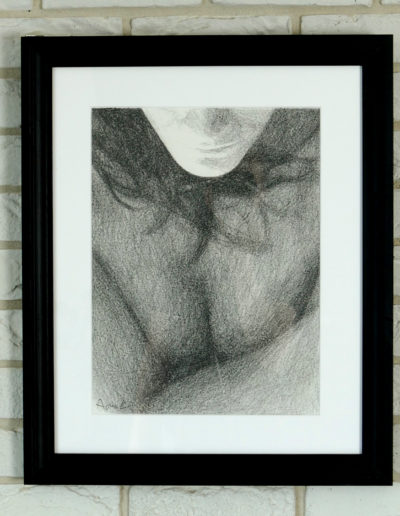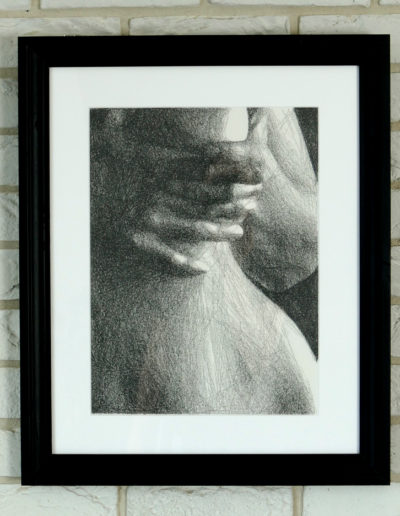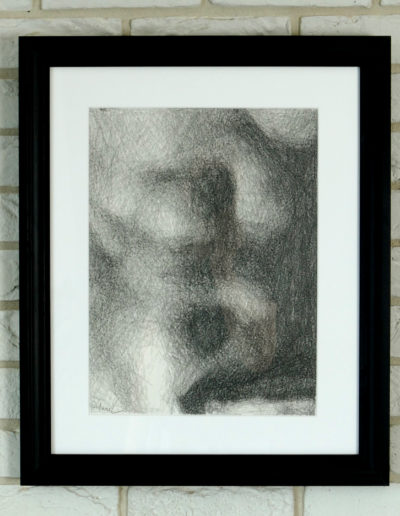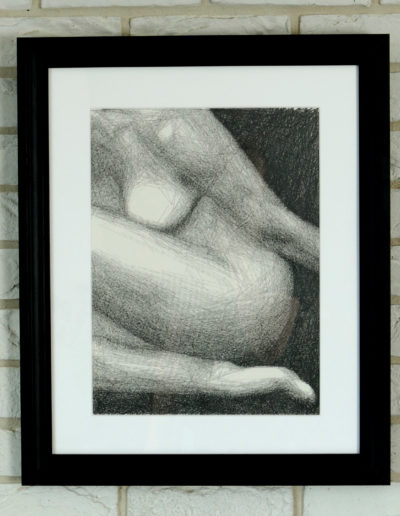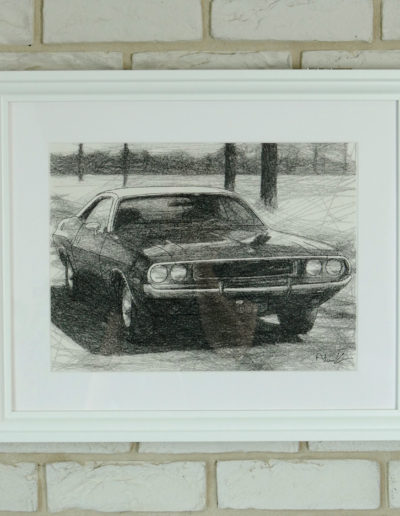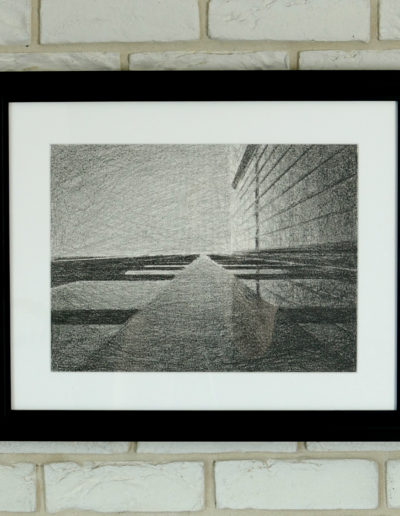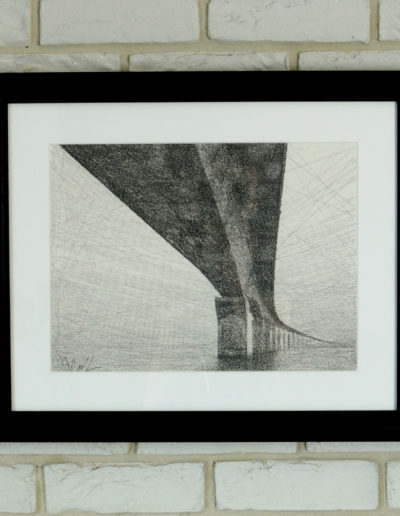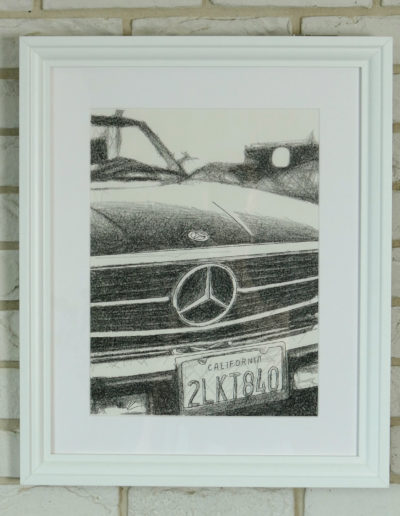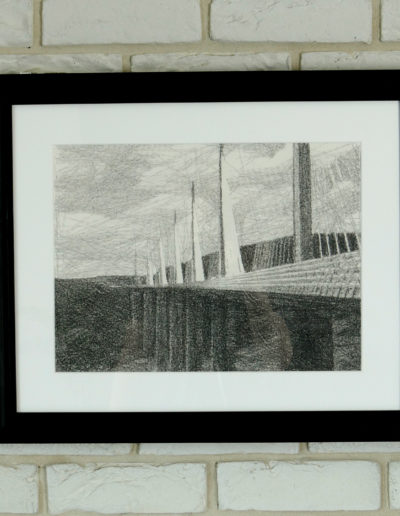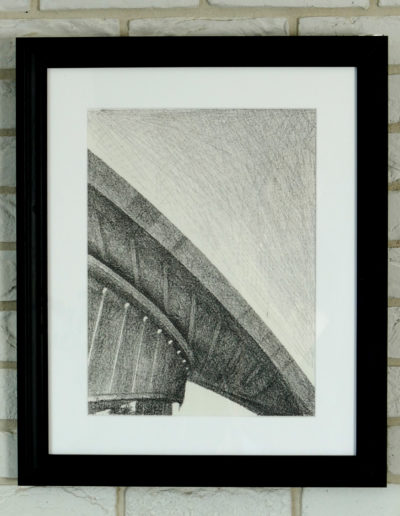Robot learns to draw
This project, a significant part of my PhD work, involved the creation of a novel robotic pencil drawing style. To fully explore and understand this new technique, I downloaded various free images from the web, focusing on three themes: cars, architecture, and the human body. These images were then redrawn by the robot, serving as a practical test and learning opportunity. This endeavor was more about experimentation and finding my personal style rather than creating art per se. It was a pivotal phase in identifying which subjects and styles were conducive to robotic drawing. The most outstanding pieces from this series, showcasing the success of my exploration, are now displayed in a gallery below.
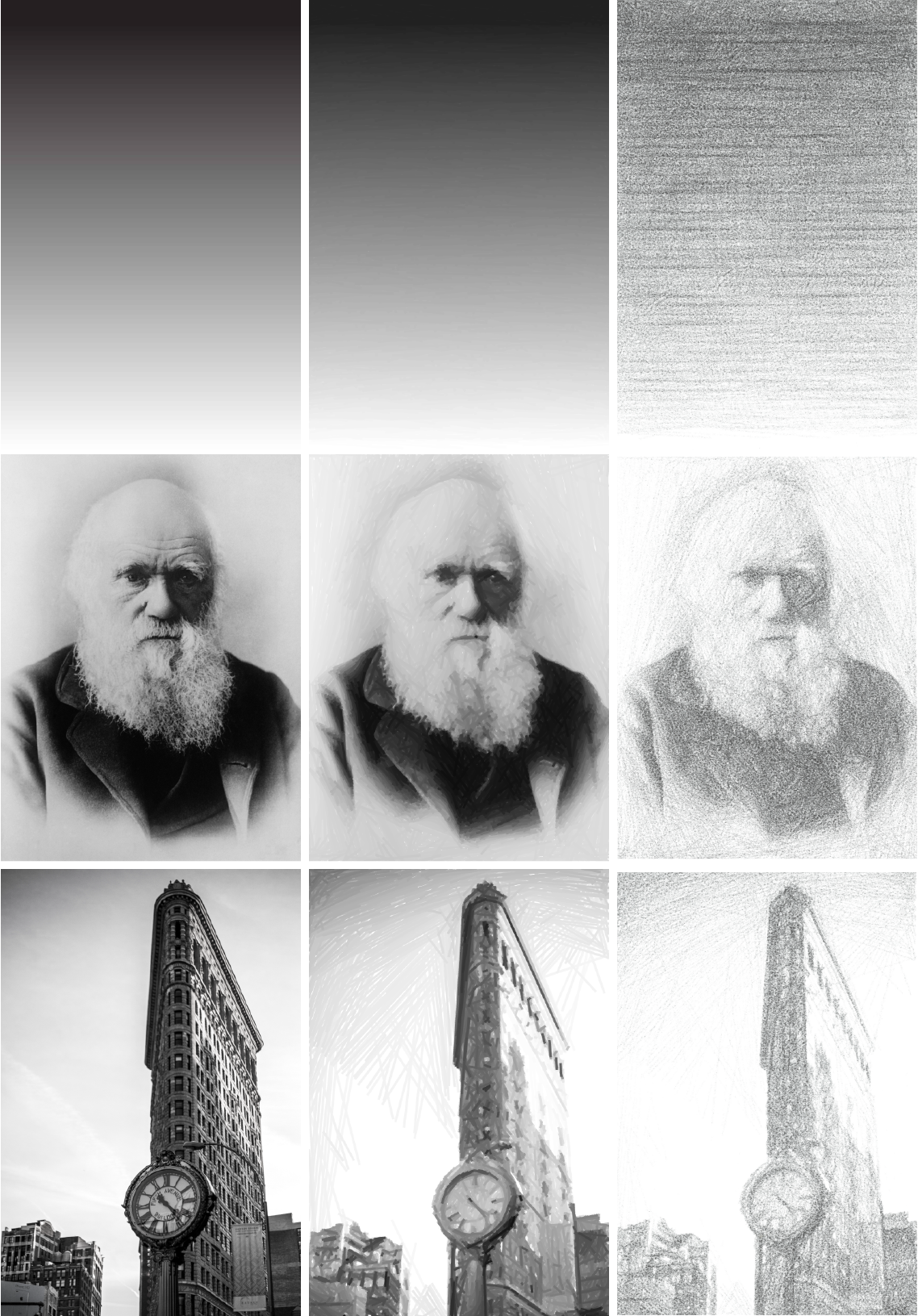
Process
The robot has a passive flexible tool with graphite designed to induce different pressure levels at the tooltip to produce strokes with different intensities. The performance of the drawing process is highly influenced by the paper used. With an RGB camera, I measured the performance of different papers and picked the best Arches Hot-press cotton paper which happens to be one of the most quality paper made. The black pen strokes are digitally hand-drawn to vector graphics and reinterpreted by the robot. The finished artwork is sprayed with two layers of varnish which makes the shades more pop. I am focused on artwork longevity thus only archival, or gallery materials are used.
The image on the left depicts are our first test images drawn. The first column from the left represents original images in the middle is the image reinterpreted by a genetic algorithm in the digital environment and finally, on the right, you can see the images drawn by the robot.
For further read, you may follow this link where is our open access scholarly article about drawing robot.
Also, a huge shout-out belongs to my colleague Jozef Goga who programmed the genetic algorithm framework which is published in this repository.






